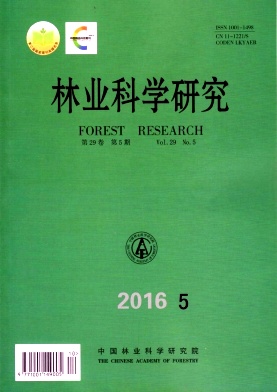|
[1]
|
程诗明, 顾万春. 苦楝表型区划的研究[J]. 林业科学研究,2006, 19(3):337-341.
|
|
[2]
|
Peng H, David J M. Flora of China[M]. Wu Z, Peter H R.;Missouri Botanical Garden Press:St. Louis, MO, USA; Science Press:Beijing, China, 2008(11):130-131. |
|
[3]
|
陈伯望, 洪菊生. 杉木种源胸径生长地理变异的趋势面分析[J]. 林业科学, 1995,31(2):110-115.
|
|
[4]
|
徐化成,郭广荣,冯林,等.油松天然林的生长与地理-气候因素的关系[J].北京林学院学报,1981,2(4):9-14.
|
|
[5]
|
陈晓阳, 陈振丙, 吴栓柱, 等. 侧柏种苗性状地理变异趋势及其气候生态基础[J].河南林业科技,1990(1):5-10.
|
|
[6]
|
陈晓阳,沈煕环,石文玉,等. 侧柏不同种源在北京越冬和生长表现[J].北京农学院学报,1990, 5(1):19-26.
|
|
[7]
|
陈晓阳,王东洋, 吴栓柱,等.侧柏种源苗木根系性状遗传变异的研究[J]. 北京林业大学学报,1990,12(2):13-20.
|
|
[8]
|
Ying C C, Square V. Performance of lodgepole pine provenances at sites in southwestern british columnbia[J]. Silvae Genetica,1991,40(5-6):215-223. |
|
[9]
|
Ying C C, Yanchuk A D. The development of British Columbia's tree seed transfer guidelines:Purpose, concept, methodology, and implementation[J]. Forest Ecology & Management,2006,227(s1-2):1-13. |
|
[10]
|
梁一池,陈祖松. 侧柏种源的地理变异趋势[J]. 福建林学院学报,1989, 9(2):134-139.
|
|
[11]
|
李纪元,饶龙兵,杨伟增. 枫杨种源苗期高生长地理变异的趋势面分析[J]. 中南林学院学,2003,23(1):15-19.
|
|
[12]
|
陈存及, 邱尔发, 梁一池, 等. 毛竹种源地理变异规律及选择的研究[J]. 竹子研究汇刊,2001(3):20-28.
|
|
[13]
|
叶志宏, 施季森, 翁玉榛, 等. 杉木地理种源变异模式[J]. 南京林业大学学报:自然科学版, 1990,14(4):15-22.
|
|
[14]
|
董玉峰, 姜岳忠, 马玲, 等. 苦楝遗传改良研究进展[J]. 山东林业科技. 2010,189(4):104-107.
|
|
[15]
|
夏海涛. 药用苦楝遗传多样性ISSR分析和遗传变异规律研究[D].福州:福建农林大学,2009:78.
|
|
[16]
|
崔赟栋, 傅兆祥, 王建华,等. 苦楝种源试验研究[J]. 河南林业科技, 1994, 44(2):14-16.
|
|
[17]
|
程诗明. 苦楝聚合群体遗传多样性研究与核心种质构建[D]. 北京:中国林业科学研究院,2005.
|
|
[18]
|
程诗明, 顾万春. 苦楝表型性状梯度变异的研究[J]. 林业科学,2006, 42(5):29-35.
|
|
[19]
|
陈丽君, 刘明骞, 廖柏勇, 等. 苦楝不同种源苗期生长性状和生长节律研究[J]. 西南林业大学学报,2014, 34(4):1-7.
|
|
[20]
|
陈丽君, 邓小梅, 丁美美, 等. 苦楝种源果核及种子性状地理变异的研究[J]. 北京林业大学学报,2014, 36(1):15-20.
|
|
[21]
|
廖柏勇,陈晓阳,陈丽君,等. 苦楝种源间种子发芽变异的观测[J]. 广东农业科学,2014(11):43-47.
|
|
[22]
|
黄少伟, 谢维辉. 实用SAS编程与林业试验数据分析[M]. 广州:华南理工大学出版社, 2001:182-190.
|
|
[23]
|
Peakall R,Smouse P E. GenAlEx 6.5:Genetic analysis in Excel. Population genetic software for teaching and research-An update[J]. Bioinformatics,2012, 28:2537-2539. |
|
[24]
|
陈羡德, 陈礼光, 阙茂文,等. 不同种源苦楝幼林试验初步研究[J]. 福建林学院学报, 2008, 28(1):23-26.
|
|
[25]
|
教忠意. 盐胁迫对苦楝育苗及生理特性的影响[D]. 南京:南京林业大学,2009:73.
|
|
[26]
|
王家源, 郭杰, 喻方圆. 不同种源苦楝种子生物学特性差异[J]. 南京林业大学学报:自然科学版,2013, 37(1):49-54.
|





 DownLoad:
DownLoad: